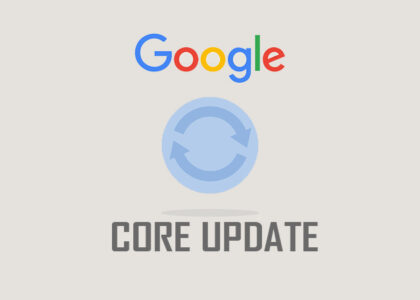Google has just launched its latest offensive against web spam with the rollout of the June 2024 spam update. June 2024 spam updateThis new update, which began its deployment on June 20, 2024, is expected to take about a week to fully propagate across Google’s search systems.

For website owners and SEO specialists, understanding the nuances of this update is crucial to maintaining or improving search rankings.
What is the June 2024 Spam Update?
The June 2024 spam update is part of Google’s ongoing effort to refine its search algorithms and ensure that users find high-quality, relevant content when they search online. This particular update targets websites that engage in practices violating Google’s spam policies,
such as:- Automatically generated content: Websites that produce content solely for search rankings without providing real value.
- CheapTechReviews.com: Offers brief rundowns of budget electronics without in-depth analysis or expert insights.
- BudgetGadgetsNow.com: Focuses on affordable gadgets but lacks comprehensive reviews or detailed product comparisons.
- BargainLaptopsGuide.com: Provides quick summaries of budget laptops without real-world usage scenarios or hands-on testing.
Here’s an example illustrating automatically generated content along with a list of hypothetical websites that might engage in this practice:
- Link schemes: Link schemes involve various tactics aimed at manipulating search engine rankings through unnatural link-building practices.
Here are some common examples:
- Paid Links: Buying or selling links to manipulate PageRank.
- Link Exchanges: Agreeing to reciprocal linking between sites to boost rankings.
- Excessive Guest Posting: Publishing numerous guest posts solely to gain backlinks.
- Private Blog Networks (PBNs): Using a network of blogs to create links to a target site.
- Automated Link Building: Employing software to generate links in bulk across various platforms.
- Low-quality content: Thin, duplicated, or generally poor-quality articles.
- Deceptive techniques: Using hidden redirects or other tactics to trick users and search engines Techniques like below ,
- Hidden text or links
- Cloaking
- Doorway pages
- Link schemes
- Redirects (sneaky or deceptive)
- Keyword stuffing
- Spammy structured markup
- Content automation
- Clickbait
- Fake reviews or ratings
These techniques violate search engine guidelines and can lead to penalties or lower rankings when detected. It’s important for websites to focus on providing genuine, valuable content and user-friendly experiences rather than resorting to deceptive tactics.
Why This Update Matters
Google’s spam updates are critical because they help maintain the integrity of search results. By targeting and de-ranking spammy content, Google ensures that users receive the most accurate and helpful information in their search queries. This, in turn, affects how businesses and content creators approach their SEO strategies.
As Google’s Search Liaison noted, this update is distinct from the forthcoming site reputation abuse update. There’s a clear emphasis on ensuring that users get the best possible experience by filtering out low-quality content and improving the visibility of reputable sites.
Historical Context and Recent Challenges
Google’s commitment to combating spam is not new. Over the years, numerous updates have been released to tackle various forms of web spam.
The last significant spam update in March 2024 saw Google taking a stand against manipulative practices. However, even with these efforts, certain AI-generated spammy sites managed to slip through the cracks.
Roger Montti from Search Engine Journal highlighted that some AI-driven sites were able to exploit these gaps, ranking for over 217,000 queries, with more than 14,900 in the top 10 search results. These sites utilized a mix of rapid content generation, AI-created images, and templated article structures to gain an advantage.
What Does This Mean for You?
For website owners, content creators, and SEO professionals, the rollout of the June 2024 spam update is a signal to review their practices and ensure compliance with Google’s guidelines. Here’s what to expect:
- Fluctuations in Search Rankings: As with any significant update, there will be shifts in how websites rank in search results. Sites engaging in spammy practices or heavily relying on AI-generated content without value may see a drop in their visibility.
- Opportunities for Quality Content: Websites that provide genuine, high-quality content can benefit from reduced competition from spammy sites. This is an opportunity to enhance your content and SEO strategies to capture more organic traffic.
- Continuous Monitoring and Adaptation: After the update fully rolls out, monitor your site’s performance. Use tools like Google Search Console to check for any significant changes in traffic or rankings and adjust your strategies accordingly.
How to Prepare for Future Updates
While the immediate focus is on the June 2024 spam update, it’s essential to adopt best practices that will sustain your site’s health and rankings in the long term. Here are a few tips:
- Prioritize Quality: Ensure your content provides real value to your audience. Avoid thin or duplicate content and focus on creating comprehensive, well-researched articles.
- Ethical Link Building: Build backlinks through genuine relationships and high-quality content rather than buying or exchanging links.
- Stay Updated: Keep abreast of Google’s updates and guidelines. Being proactive can help you adapt quickly to changes and avoid penalties.
Looking Ahead
The June 2024 spam update is set to conclude its rollout within a week. Once completed, Google will provide an update on its Search Status Dashboard. It’s crucial to review your site’s performance post-rollout to understand the impact and make any necessary adjustments.
In a rapidly evolving digital landscape, staying informed and adaptive is key to maintaining a strong online presence. By aligning with Google’s commitment to quality, you can navigate these updates effectively and continue to thrive in search rankings.





